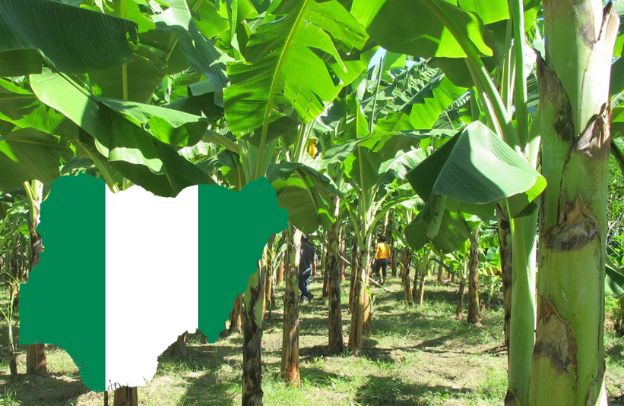Managing Pests and Diseases in Cassava Farming: A Guide for Nigerian Farmers

Want to learn about Managing Pests and Diseases in Cassava Farming? You are in the right place. What hidden threats could destroy Nigeria’s cassava crops and jeopardize the nation’s food security? Cassava (Manihot esculenta) is a vital staple crop in Nigeria, serving as a primary source of carbohydrates for millions and playing a significant role in the nation’s economy.
Learn How to Leverage Your Story through our Story To Asset Transformation (S.A.T) Framework.
However, cassava cultivation faces challenges from various pests and diseases that can severely impact yield and quality. Effective management of these threats is crucial for Nigerian farmers to ensure food security and sustain their livelihoods.
Cassava cultivation faces significant challenges from various pests that can severely impact yield and quality. Understanding these common pests is essential for developing effective management strategies to ensure the health and productivity of cassava plants. Below are some of the common pests affecting cassava that you should know of:
- Cassava Mealybug (Phenacoccus manihoti): This pest feeds on the sap of cassava plants, causing leaf deformation, stunted growth, and reduced tuber development. Severe infestations can lead to significant yield losses. Biological control, particularly the introduction of the parasitic wasp Anagyrus lopezi, has been successful in managing mealybug populations.
- Cassava Green Mite (Mononychellus tanajoa): These mites cause yellowing and drying of leaves, leading to defoliation and decreased photosynthesis. Cultural practices such as intercropping and maintaining adequate plant spacing can help reduce mite infestations.
- Variegated Grasshopper (Zonocerus variegatus): This pest feeds on cassava leaves, often leading to complete defoliation in severe cases. Manual collection and destruction of grasshoppers, along with the use of biological control agents, are effective management strategies.
- Whiteflies (Bemisia tabaci): Whiteflies not only cause direct damage by feeding on plant sap but also transmit viral diseases such as Cassava Mosaic Disease. Implementing integrated pest management (IPM) strategies, including the use of resistant varieties and biological controls, can help manage whitefly populations.
Major Diseases Affecting Cassava
Despite its resilience and adaptability, cassava is susceptible to several diseases that can significantly reduce yield and quality. Understanding these diseases and implementing effective management strategies are crucial for ensuring food security and the livelihoods of smallholder farmers.
Cassava Mosaic Disease (CMD):
CMD is caused by a group of viruses known as cassava mosaic begomoviruses, transmitted primarily by the whitefly (Bemisia tabaci).
Symptoms: Infected plants exhibit a range of symptoms, including mosaic patterns on leaves, leaf distortion, and stunted growth. These manifestations can lead to yield losses ranging from 40% to 70%.
Management Strategies:
Resistant Varieties: Planting cassava varieties bred for resistance to CMD has proven effective in reducing disease incidence.
Phytosanitary Measures: Regular monitoring of fields, rogueing (removal) of infected plants, and controlling whitefly populations are essential practices to manage the spread of CMD.
Cassava Brown Streak Disease (CBSD):
Cassava brown streak disease (CBSD) is a catastrophic threat to global cassava production, as described by the Food and Agriculture Organization. This ruthless disease ravages both the quantity and quality of cassava roots, severely crippling harvests.
Infected crops can be left entirely unharvestable, particularly when the roots remain on the ground for over nine months. The consequences are far-reaching, devastating entire communities that rely on cassava as a staple food and a vital economic resource. With its ability to decimate entire crops, CBSD presents a dire challenge to food security and agricultural sustainability.
CBSD is caused by two distinct viruses: Cassava brown streak virus (CBSV) and Ugandan cassava brown streak virus (UCBSV). Learn more about the Ugandan Cassava Brown Streak Virus in ScienceDirect.
Symptoms: The disease manifests as brown streaks on stems and veins of leaves, yellowing and necrosis of leaves, and brown, corky necrotic lesions in the tuberous roots, rendering them unfit for consumption.
Management Strategies:
Resistant Varieties: Utilizing cassava varieties that show resistance to CBSD is a primary control method.
Cultural Practices: Prompt removal and destruction of infected plants, crop rotation, and ensuring the use of virus-free planting materials help in managing CBSD.
See also: Nigerian Cassava Production: How to Transform a Staple Crop into Africa’s Economic Powerhouse
Cassava Bacterial Blight (CBB):
CBB is caused by the bacterium Xanthomonas axonopodis pv. manihotis.
Symptoms: Infected plants display leaf wilting, blight, angular leaf spots, and dieback of stems. Severe infections can lead to significant yield reductions.
Management Strategies:
Clean Planting Materials: Ensuring the use of disease-free cuttings is vital to prevent the introduction of CBB into new fields.
Cultural Practices: Implementing crop rotation, avoiding mechanical injuries to plants, and removing and destroying infected plant debris can reduce the incidence of CBB.
Implementing these management strategies requires a holistic approach, combining the use of resistant varieties, cultural practices, and regular field monitoring.
Collaborative efforts among farmers, researchers, and agricultural extension services are essential to develop and disseminate effective disease management practices. By adopting these integrated strategies, cassava farmers can enhance crop resilience, ensure sustainable production, and secure their livelihoods.
Integrated Pest and Disease Management Strategies
Effective management of pests and diseases is crucial for sustaining cassava production in Nigeria. Adopting an Integrated Pest Management (IPM) approach offers a comprehensive and sustainable solution by combining various control strategies. Below are key components of IPM tailored for Nigerian cassava farmers:
Use of Resistant Varieties
Planting cassava varieties bred for resistance to specific pests and diseases is a foundational IPM strategy. These varieties have been developed to withstand common threats such as Cassava Mosaic Disease (CMD) and Cassava Bacterial Blight (CBB).
Utilizing resistant strains not only reduces the reliance on chemical controls but also promotes healthier crop stands and improved yields.
Cultural Practices
Implementing proper agricultural practices can significantly diminish the incidence of pests and diseases:
- Crop Rotation and Intercropping: Rotating cassava with non-host crops and intercropping with plants like legumes can disrupt pest life cycles and reduce disease prevalence.
- Proper Spacing and Timely Weeding: Adequate plant spacing ensures good air circulation, while regular weeding minimizes competition and habitats for pests.
Companion Planting: Introducing certain plants alongside cassava can repel pests and attract beneficial insects that aid in natural pest control.
Optimal Planting Time: Aligning planting schedules to avoid peak pest populations can reduce infestation risks.
Biological Control
Leveraging natural predators and parasitoids offers environmentally friendly pest management solutions:
- Predatory Beetles: Species such as ladybird beetles feed on cassava mealybugs and whiteflies, effectively controlling their populations.
Parasitic Wasps: Introducing parasitoids like Anagyrus lopezi has been successful in managing cassava mealybug infestations.
Predatory Mites: Phytoseiid mites are natural enemies of cassava green mites and can help keep their numbers in check.
Chemical Control
While chemical pesticides can be effective, their use should be judicious to prevent environmental harm and pest resistance:
- Selective Application: Pesticides should be used as a last resort, targeting specific pests to minimize non-target effects.
- Adherence to Guidelines: Farmers must follow recommended dosages and application methods to ensure safety and efficacy.
- Integrated Approach: Combining chemical control with other IPM strategies enhances overall effectiveness and sustainability.
Regular Monitoring and Early Detection
Proactive field surveillance is essential for timely intervention:
- Routine Inspections: Regularly examining plants for signs of pests or diseases facilitates early detection and management.
- Use of Traps and Indicators: Deploying pheromone traps and monitoring tools can help in assessing pest populations and determining action thresholds.
- Record Keeping: Maintaining detailed records of pest occurrences and control measures aids in evaluating the effectiveness of management strategies.
See also: Knowledge Exchange and Peer-to-Peer Learning for Cassava Farmers in Nigeria – A Guide for African Diaspora Entrepreneurs
By integrating these components, Nigerian cassava farmers can develop robust IPM programs that enhance crop resilience, reduce production costs, and promote environmental sustainability. Collaboration with agricultural extension services and continuous education on emerging pest management techniques will further strengthen these efforts.
In conclusion, effective management of pests and diseases is paramount for the sustainability and productivity of cassava farming in Nigeria. By adopting Integrated Pest Management (IPM) strategies, including the use of resistant varieties, cultural practices, biological controls, and regular field monitoring, farmers can mitigate the adverse effects of these challenges.
Nigerian cassava farmers are encouraged to engage in continuous education and training to stay abreast of the latest pest and disease management techniques.
Participating in programs such as the Good Agronomic Practices (GAP) training, facilitated by organizations like the African Agricultural Technology Foundation (AATF), can enhance skills and knowledge in sustainable cassava cultivation. By implementing these practices, farmers can ensure robust yields, contribute to national food security, and improve their economic well-being.
Learn How to Leverage Your Story through our Story To Asset Transformation (S.A.T) Framework.





